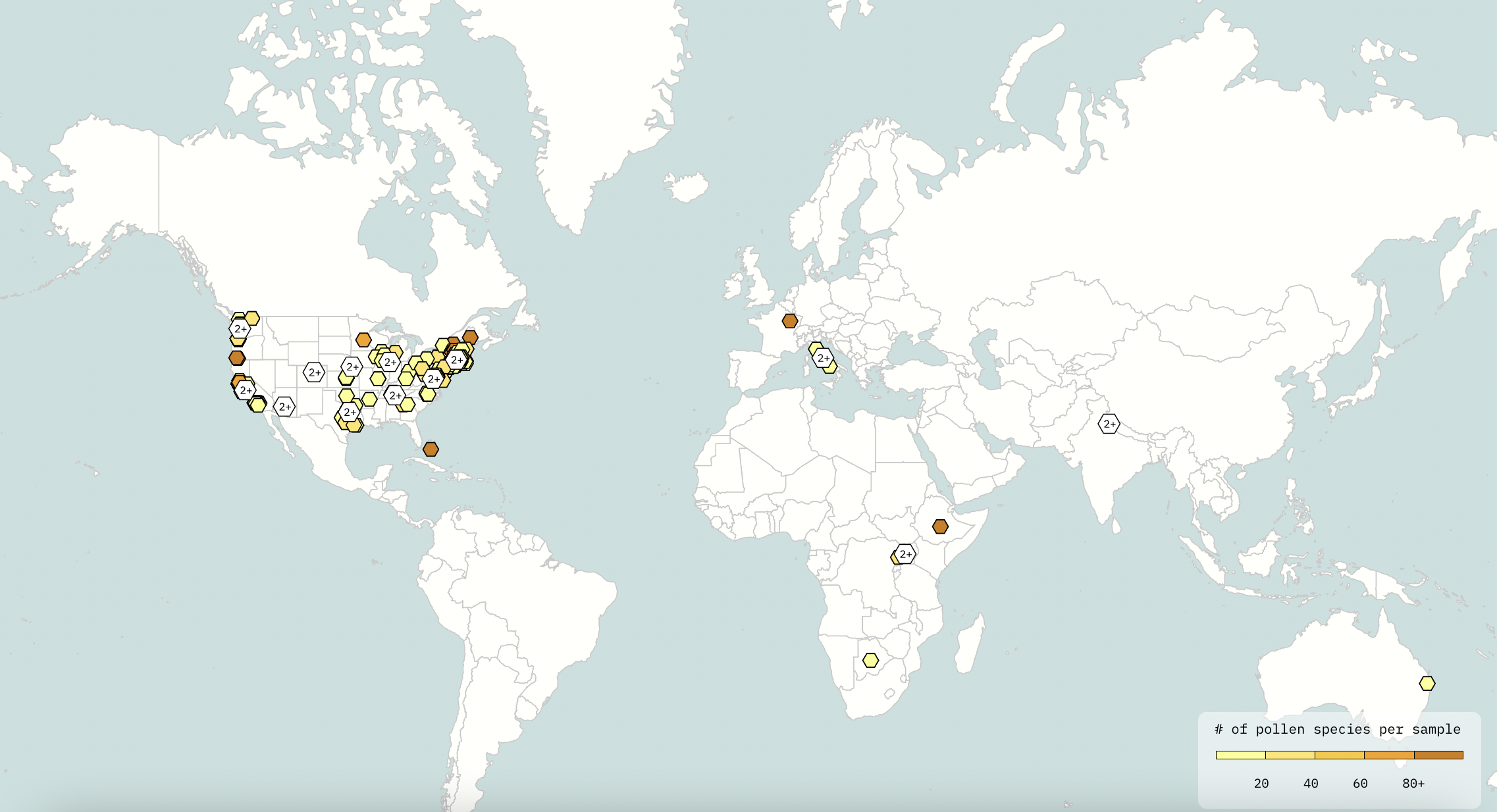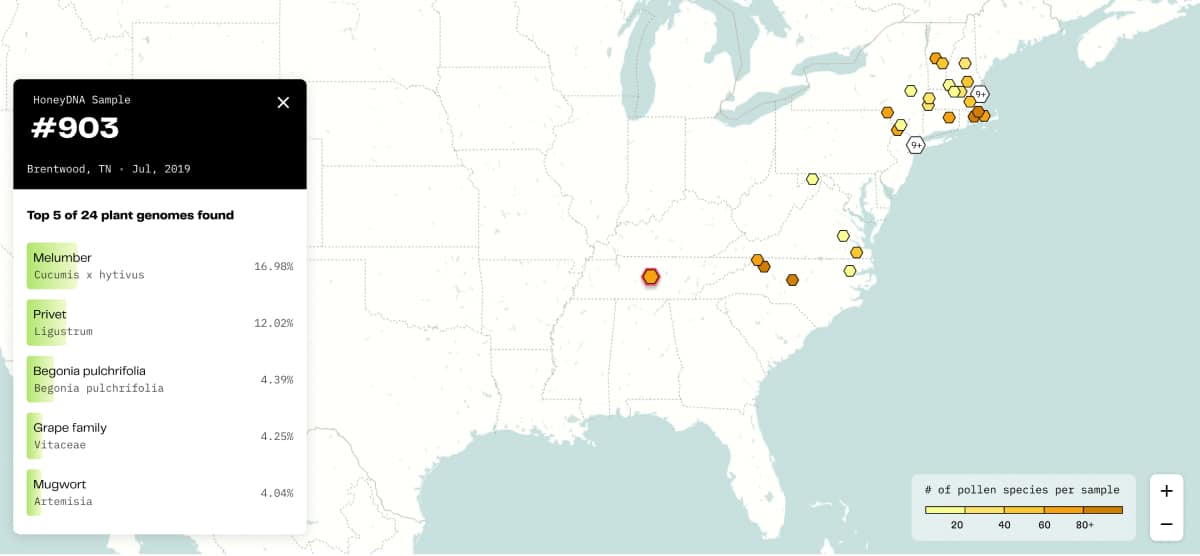Mapping Honey DNA
Understanding where bees forage reveals which plants best feed pollinators in the local environment.

HoneyDNA is the process of identifying the exact percentage of various pollen species found in honey through advanced genomic sequencing. Understanding where bees foraged reveals which plants best feed pollinators in the local environment. The UBL is taking data collected by Best Bees and putting it on the map.
Mapping HoneyDNA aims to reveal geographic areas where bees prosper based on the diversity of their diet. Consequently, the map will identify “pollinator food deserts,” or areas where plant forage is sparse or monocrop culture is prevalent. We hope to take a citizens science approach to creating a biodiverse planet where bees can thrive.
Future initiatives include using HoneyDNA data as a tool to restore land after natural disasters. By identifying the presence of invasive species in certain locations before and after extreme weather occurrences, we’re able to inform how to revive our land in a sustainable way that prioritizes native and diverse plant life.
